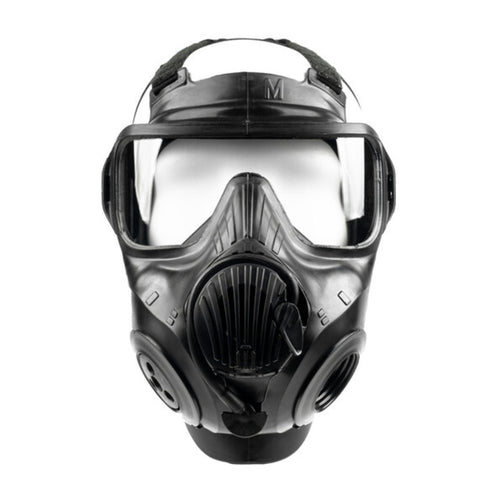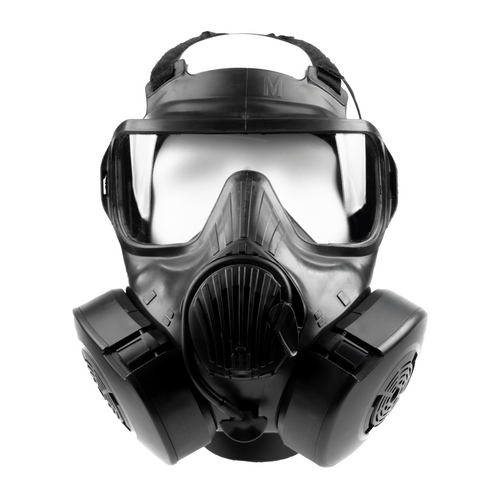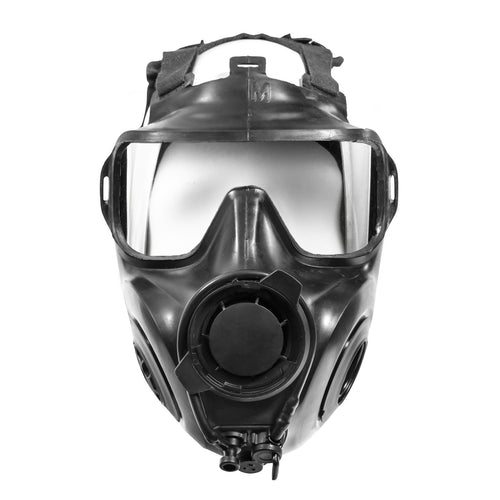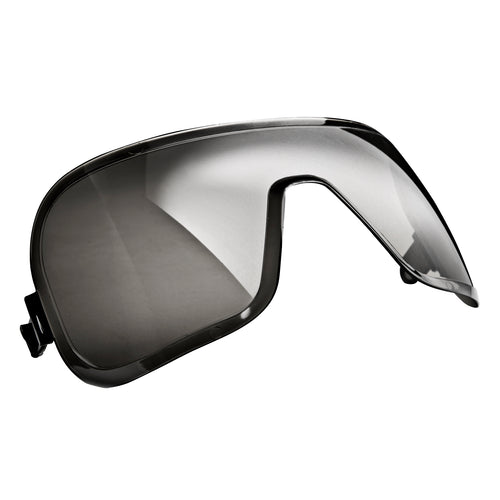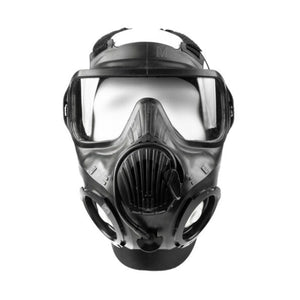
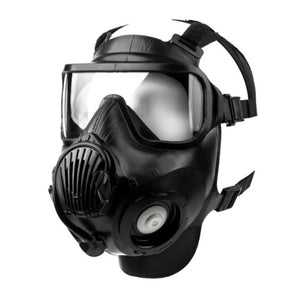
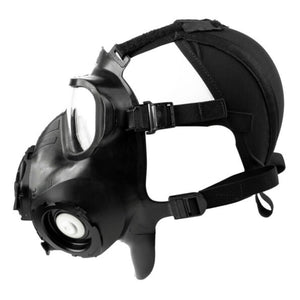
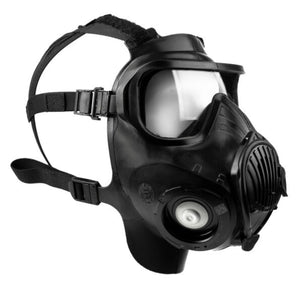
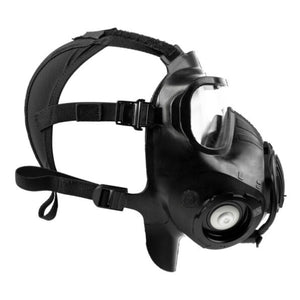
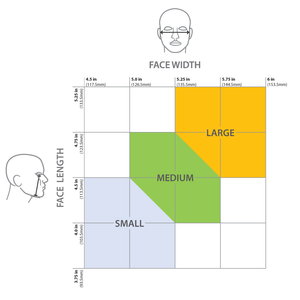
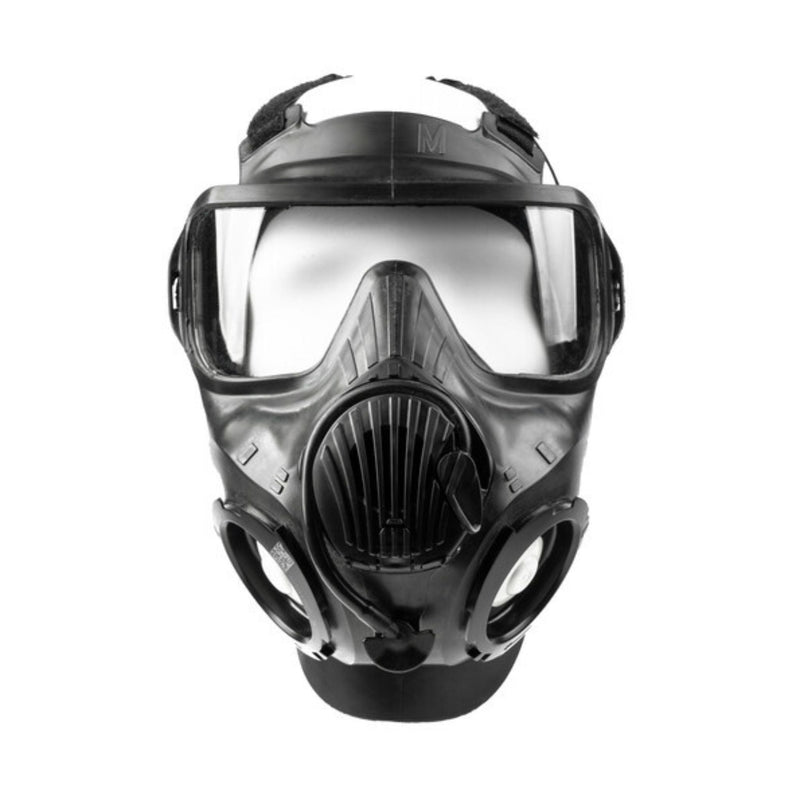
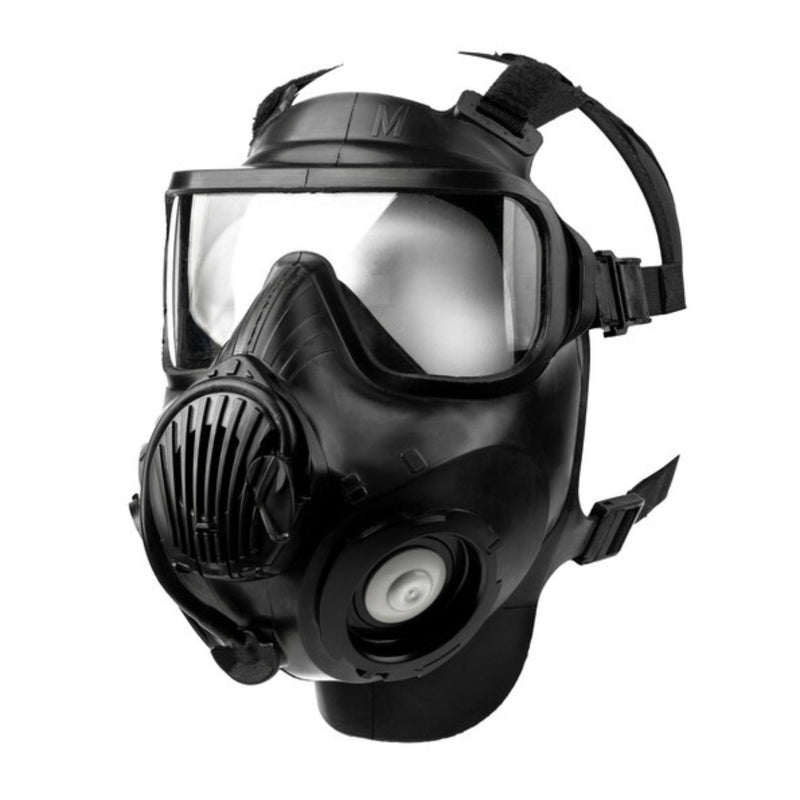
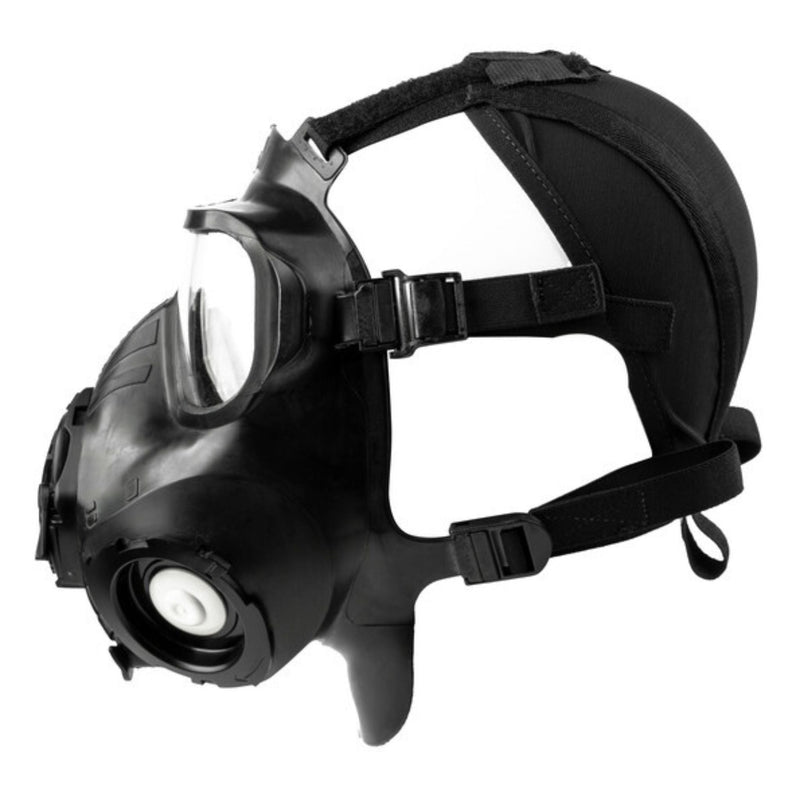
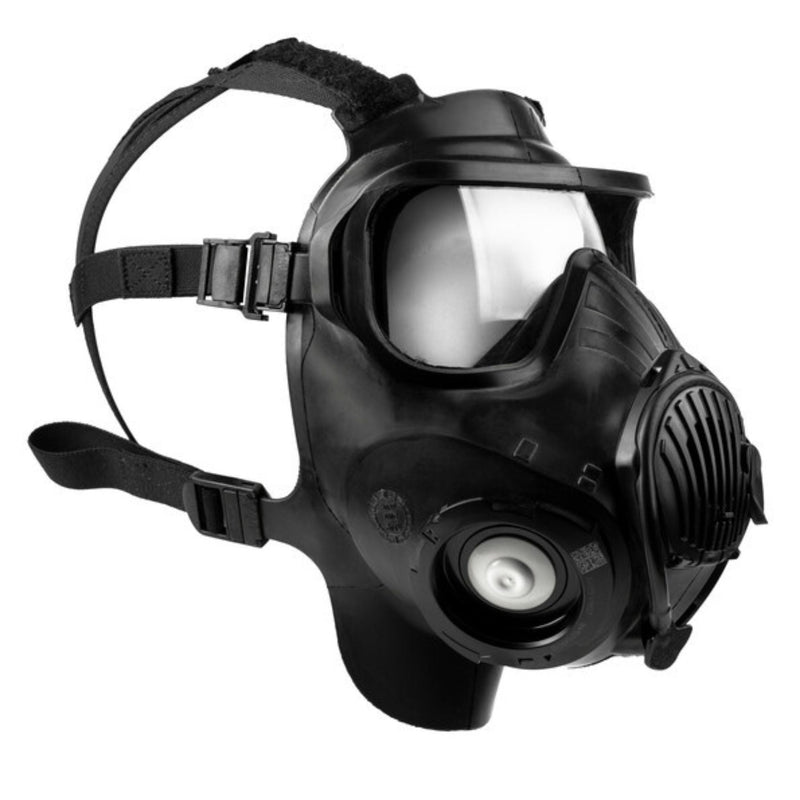
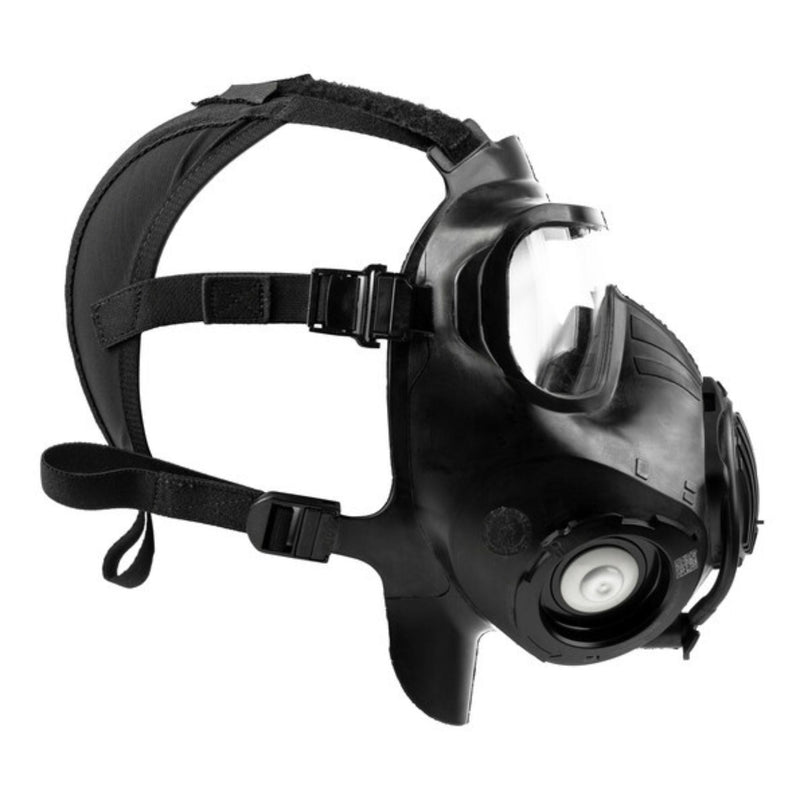
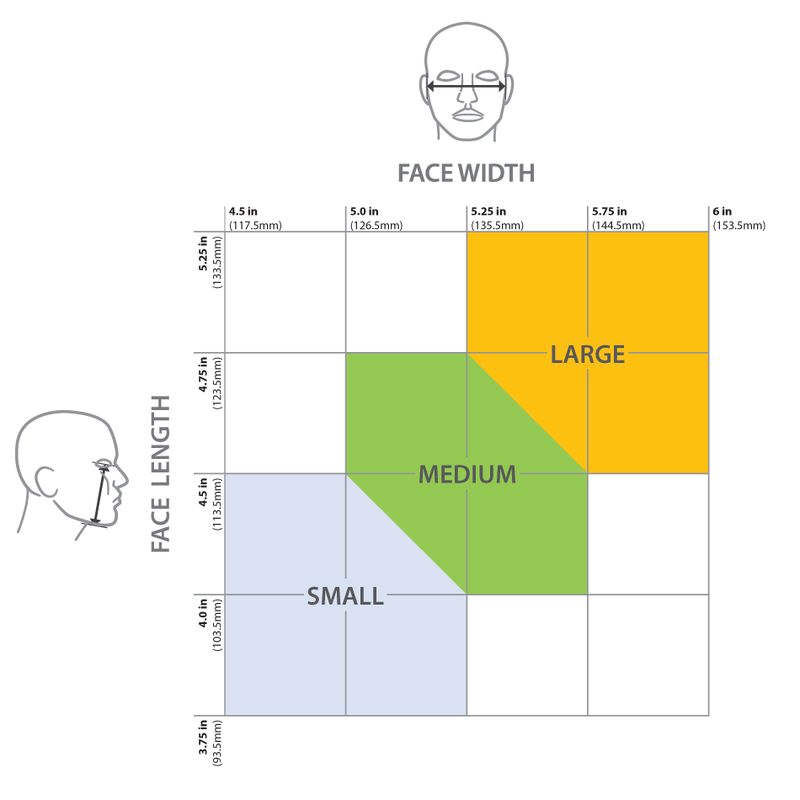
FM50™ Air Purifying Respirator
The FM50™ air purifying face mask is the next generation in full face respirator masks, specifically designed to meet the latest NATO forces military mask requirements. Developed for diverse applications, from anti-terrorism to military operations, the Avon FM50™ gas mask is engineered to counter multiple Chemical, Biological, Radiological, and Nuclear (CBRN) threats. The Avon FM50™ gas mask brings a whole new dimension to respirator design, comfort and protection, making it a dependable choice in demanding environments.
Performance
The full face respirator mask provides:
CBRN Protection: The face mask air purifier resists CBRN agents such as Sarin (GB), Mustard (H), and Soman (GD).
-
Long-lasting performance: Provides over 36 hours of protection.
-
Enhanced comfort and fit: Designed for extended wear, the lightweight FM50™ gas mask offers a secure fit, ensuring a high level of protection without compromising on comfort.
-
Wide field of view: The mask provides a 96% visual field, exceeding NIOSH CBRN standards, ensuring visibility in various situations.
Product shipped in fulfillment of e-commerce orders may be more than one year old.
PLEASE NOTE ALL SALES ARE FINAL. OPEN BOX RETURNS WILL NOT BE ACCEPTED.
In the rare case of a defective product, please refer to our returns policy and contact customer service for further instructions.
Performance
| Mask Performance | ||
| CBRN Agent Resistance | Greater than 36 hrs | |
|---|---|---|
| Mustard (H) | Greater than 36 hrs | |
| Sarin (GB) | Greater than 36 hrs | |
| Soman (GD) | Greater than 36 hrs | |
| VX | Greater than 36 hrs | |
| Laboratory Protection Factory Performance (Sodium Chloride) | Greater than 10,000 | |
| Weight | ||
| FM50 Mask (including twin filters) | 840 grams | |
| Breathing Performance | ||
| Re-breathed CO2 | 0.80% | |
| Inhalation Resistance at: | Mask Only | Mask & Filters |
| 30 L/Min | 2 mm WG | 10 mm WG |
| 95 L/Min | 8 mm WG | 30 mm WG |
| 160L/Min | 12 mm WG | 64 mm WG |
| Exhalation resistance at: | ||
| 85 L/Min | 7 mm WG | |
| 160 L/Min | 12 mm WG | |
| Field of View | ||
| Visual Field Score - NIOSH CBRN APR Standard | 96 | |
Sizing
Please select the correct size according to the sizing chart found in the photo gallery for this product.
NOTE: For proper mask fit, faces must be clean shaven.
This air purifying face mask is designed for specific uses. Misuse can result in serious health risks. Please review the following warnings:
- Always perform a satisfactory negative pressure leak test before using this respirator.
- The FM50 gas mask is not suitable for use in confined spaces such as stills, tanks, or sewers. It does not provide breathable air.
- If you have facial hair or wear glasses, the mask may not seal properly, reducing its protection.
- Do not use this respirator mask in environments with low oxygen (less than 19.5%) or in areas with airborne contaminants/pollutants the filter can't protect against.
- Do not use this full face mask in oxygen-enriched atmospheres (> 22.5% Oxygen).
- Set up, check, don, doff, clean, and maintain the FM50 gas mask in a clean area free of contaminants.
- Do not use if any system component demonstrates signs of wear or damage.
- Do not use in areas where the head harness may be exposed directly to flame.
- Avon Protection filter canisters provided with this equipment do not offer protection from smoke or carbon monoxide.
Potential misuse of the Avon FM50 gas mask may result in serious, irreversible respiratory harm or death. Avoid these actions:
- Using the air purifying face mask for firefighting.
- Modifying, removing or re-configuring any of the system components other than as recommended by the manufacturer.
- Attaching unapproved equipment or accessories to the FM50 gas mask.
- Re-using the equipment without appropriate decontamination or following impact or tear damage without inspection and testing, even though contamination or damage may not be apparent.
- Using the mask respirator with non-approved filter canisters.
Warnings and Limitations of Use
- Always perform a satisfactory negative pressure leak test before using this respirator.
- Do not use in confined spaces such as stills, tanks or sewers. This device does not provide supplied breathable air.
- It is unlikely that the requirements for inward leakage of the system will be met if facial hair, or spectacle side arms pass under the face seal of the full face mask.
- Do not use this equipment in Oxygen deficient atmospheres (<19.5% Oxygen) or for airborne contaminants or pollutants for which the approved filter canister(s) will not provide adequate protection.
- Do not use this equipment in Oxygen enriched atmospheres (> 22.5% Oxygen).
- System set-up, pre-check, donning, doffing, cleaning and maintenance must be performed in an area known to be free of contaminants.
- Do not use if any system component demonstrates signs of wear or damage.
- Do not use in areas where the head harness may be exposed directly to flame.
- Avon filter canisters provided with this equipment do not offer protection from smoke or carbon monoxide.
Potential misuse of the equipment may result in serious, irreversible respiratory harm or death. These actions include:
- Firefighting.
- Modifying, removing or re-configuring any of the system components other than as recommended by the manufacturer.
- Adapting the system to accommodate attachments or apparatus not approved for use by the manufacturer.
- Re-using the equipment without appropriate decontamination or following impact or tear damage without inspection and testing, even though contamination or damage may not be apparent.
- Use with unapproved filter canisters.
Resources
The U.S. Government has certain controls over the FM50™ Air Purifying Respirator and prohibits the exporting, selling, transferring, transporting, or shipping of the product outside the U.S. without first obtaining approval from the U.S. government, or as authorized by U.S. law and regulations. This restriction applies whether the product is in its original form or has been incorporated into other items. This product is subject to International Traffic in Arms Regulations (ITAR) with a classification of XIV(f)(4).
Product shipped in fulfillment of e-commerce orders may be more than one year old.
PLEASE NOTE ALL SALES ARE FINAL. OPEN BOX RETURNS WILL NOT BE ACCEPTED.
In the rare case of a defective product, please refer to our returns policy and contact customer service for further instructions.














